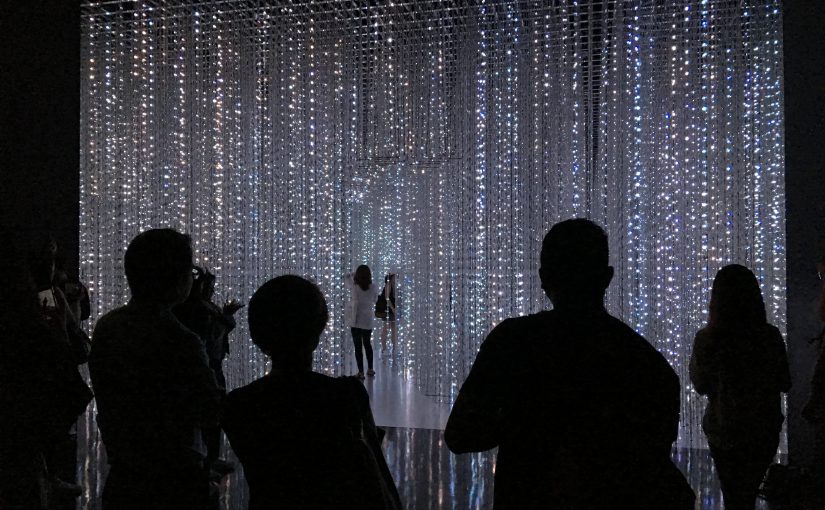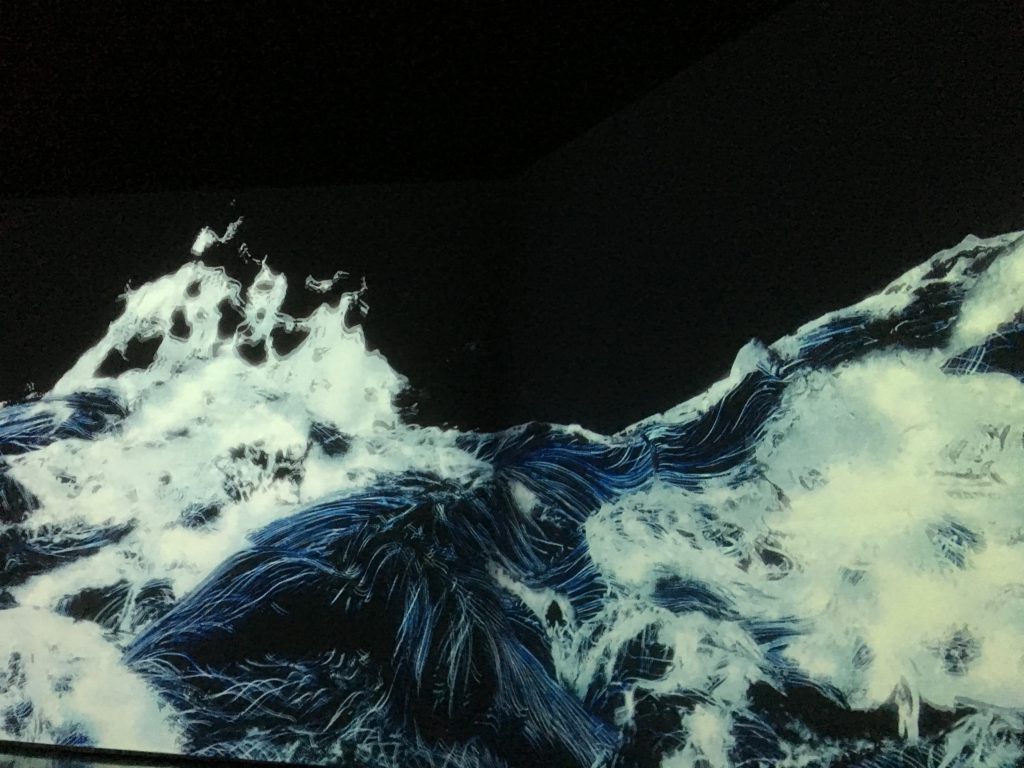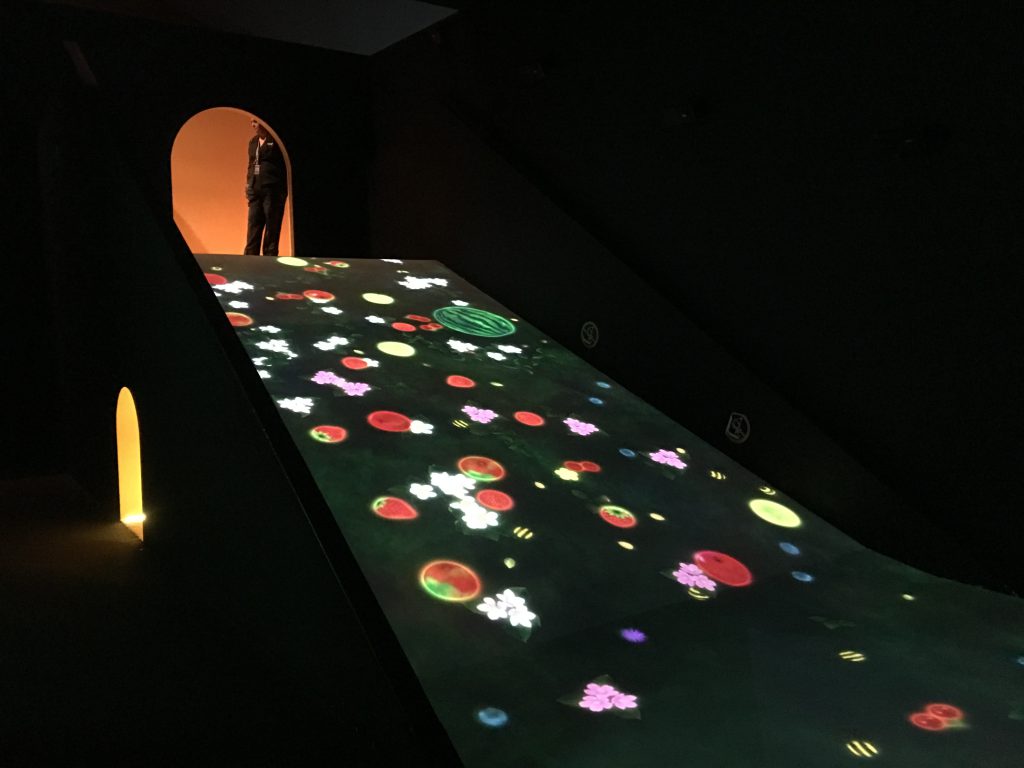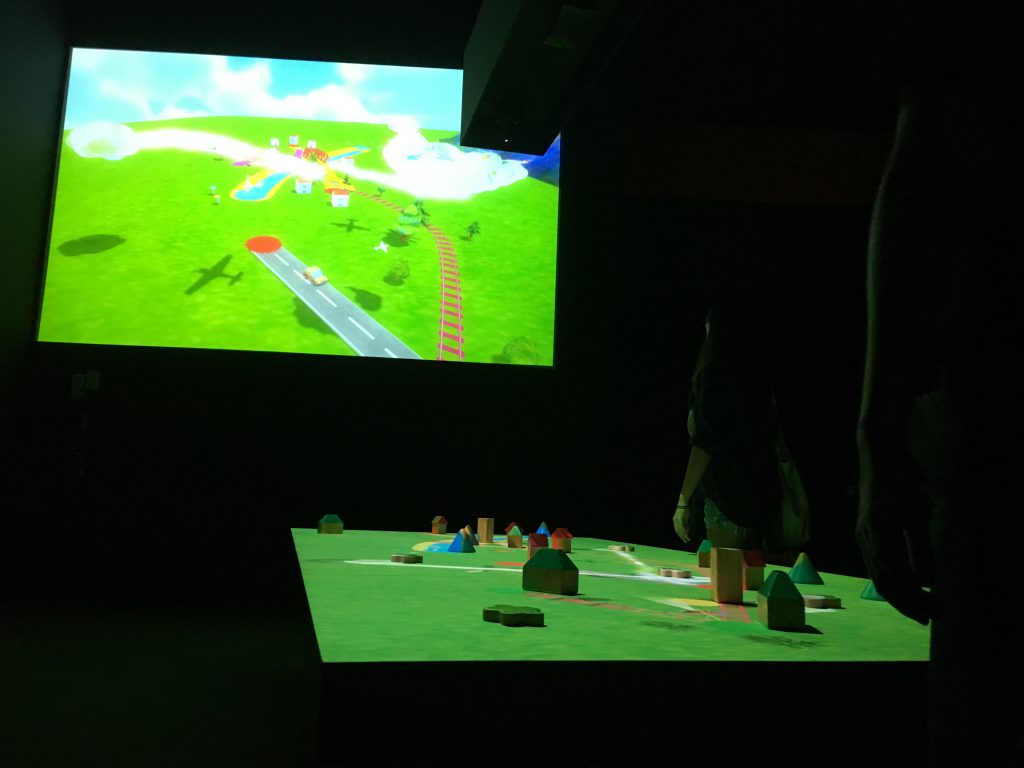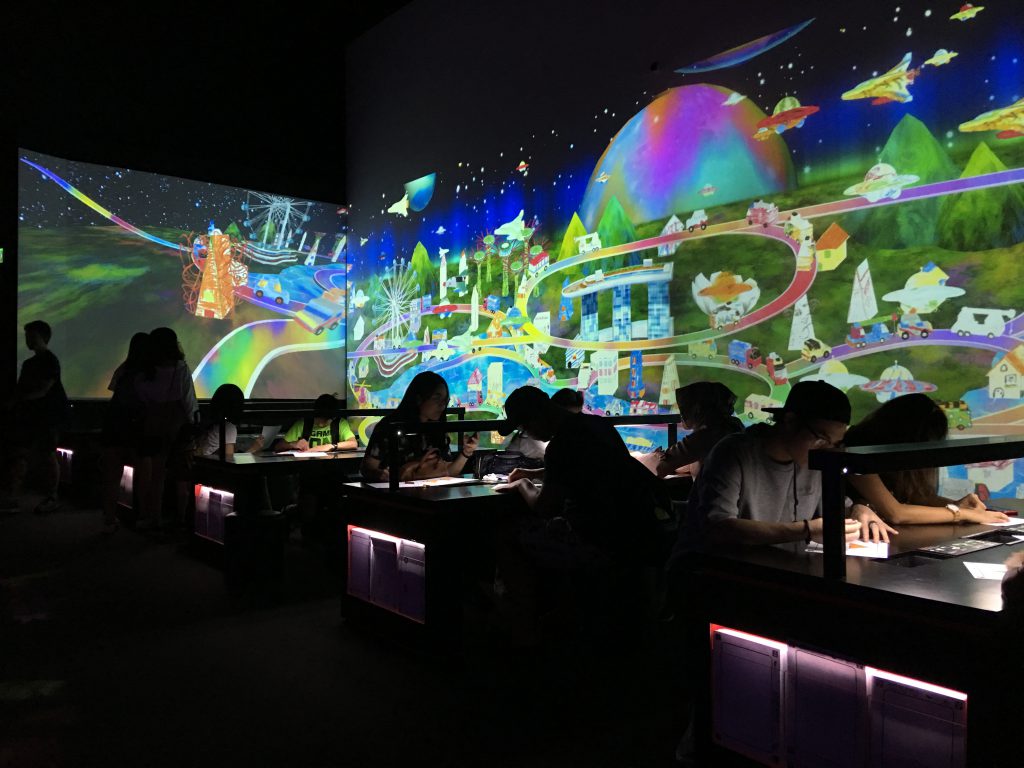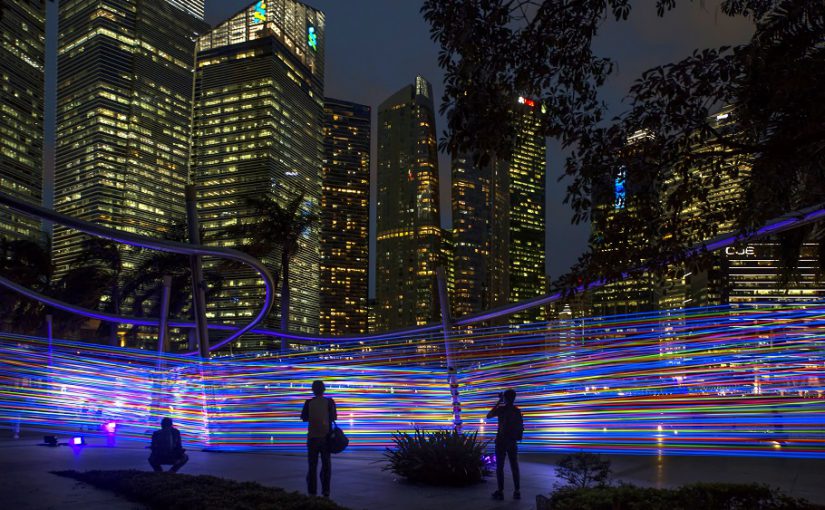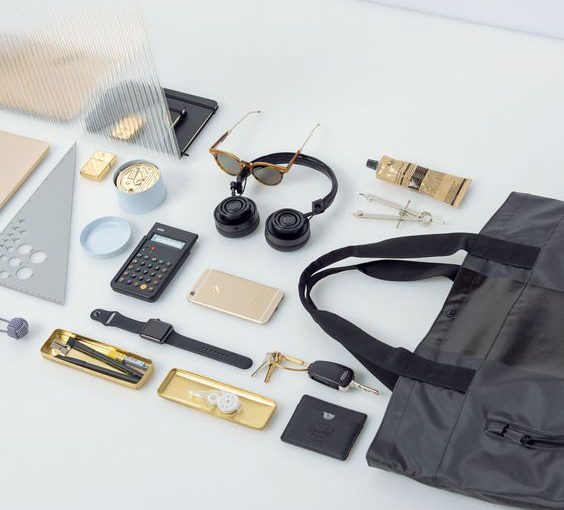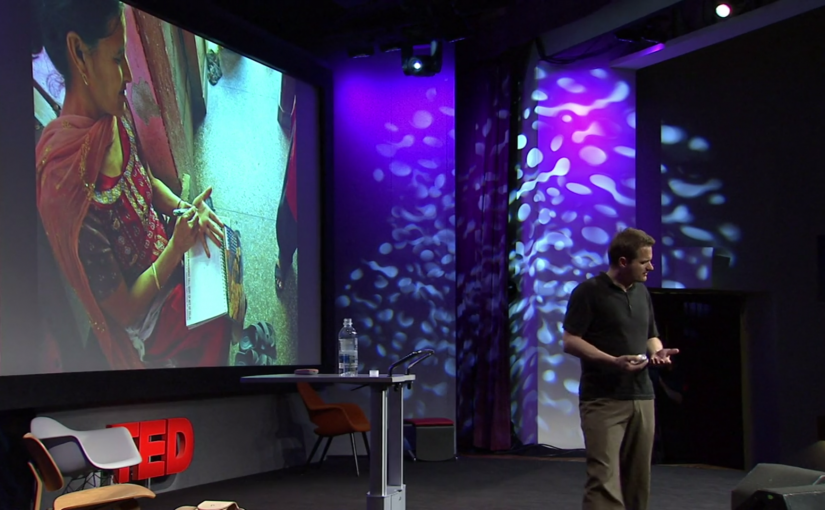Future World explored 4 different types of narratives namely Nature, Town, Park and Space. We kickstarted the visit in an immersive installation called, “Crows are chased and the chasing crows are destined to be chased as well, Transcending space”. Through the 3-dimensional audio and light projection, I felt totally absorbed into the scene and as a result I got motion-sickness. The next installation was “Black Waves”, a therapeutic experience I would say. I realised that standing and lying on the beanbags gave 2 different experiences. As I stood, I could clearly see the limitations/ borders of the installation, and this reminded me of the real physical world whereas lying down on the beanbags, brought me closer to the art, blurring the separation between myself and nature. Seeing the waves from a lower perspective was more impactful and whelming.
Moving on to the Town and Park it felt like the space was designed by a child. As Takasu mentioned, their approach in designing these spaces was inspired by how children interact and see the world around them. Curious and intrigued, I found myself exploring this narrative like a child. Sketch town and Sketch aquarium were memorable experiences because it really boils down to how children use their imagination to create and make things come to life. The familiarity of the slide and the hopscotch, with added interactivity, invited children as well as adults, to rediscover the thrills of those classical childhood activities.
We ended the tour at the Space exhibit, Crystal Universe, a massive installation (2 tonnes!) of LED lights, all synchronized to create different space phenomenon which can be chosen by the user himself/herself through a web browser on their mobile phone.
Future world had an overall immersive; well-crafted interactivity that was relatable, understandable and intelligible. I also want to emphasize that sound also played a very important role in the installations. It complemented the visuals/projections; completed the installation and connected the dots between the different experiences. Future World shed light on some essential design consideration for the iLight project, like size; sound but also our position and condition in the space. For instance, some exhibits in Future World were best experienced (visually and aurally), at specific positions and this is an important consideration to keep in mind when designing the iLight proposal.
